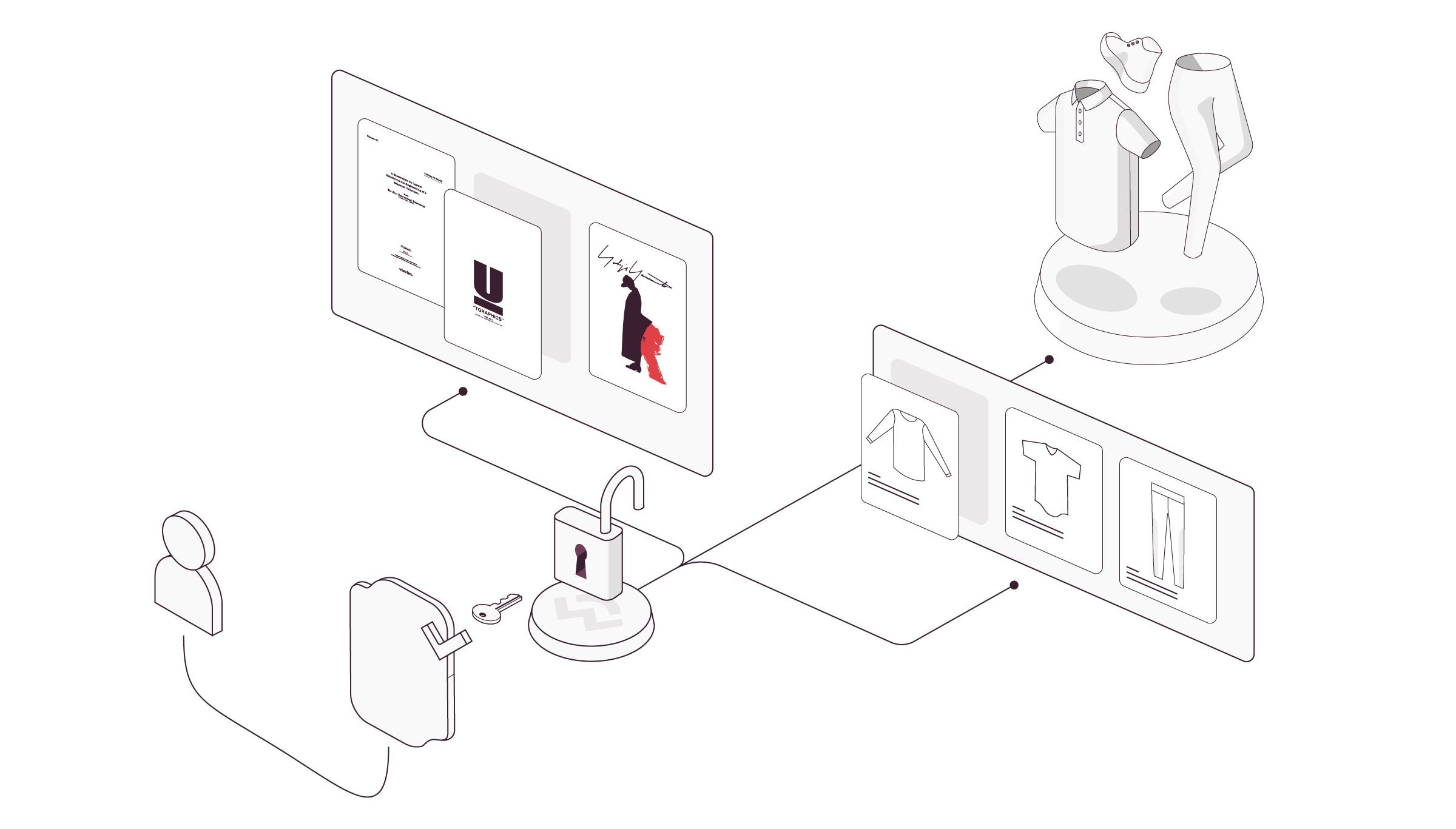VISUAL MAINTENANCE
In the ever-shifting landscape of the garment, art, and creative industries, change is constant and rarely confined to the established channels of distribution or documentation. Much of this transformation is driven by emerging tools and infrastructures that alter how work is created, preserved, and circulated. The structures that once relied heavily on academic archives or centralized publishing have been challenged by digital platforms capable of organizing and distributing large bodies of visual and historical material. These platforms act as living repositories, ensuring that creative and industrial knowledge is no longer limited to a single generation but remains accessible and re-interpretable over time.
At the center of this shift lies the pressing question of how access, authorship, and authenticity can be secured in digital environments. Blockchain technology offers one of the most compelling answers. By leveraging encryption and immutable record-keeping, it provides a way to ensure provenance while protecting personal information. More than a defensive layer of security, blockchain reframes the very way creative work is accessed, valued, and circulated across industries, extending far beyond the limitations of traditional patronage or subscription models.
Token-enabled content brings several advantages to this evolving framework. Early supporters can demonstrate their involvement from the inception of a project, reinforcing the cultural value of participation itself. Curators and archivists gain the ability to directly engage with and reward their communities, creating systems of recognition that are both reciprocal and transparent. Similarly, audiences can support creators directly, establishing a clear channel of appreciation without the need for intermediaries. Smart contracts further enable the tailoring of content visibility, ensuring that specific works are accessible only to designated supporters when necessary.
This blockchain-powered system reshapes the mechanics of access. Instead of relying on conventional identifiers such as names or email addresses, users interact through blockchain-encrypted keys that serve both as gateways and as digital wallets. This dual function preserves anonymity while maintaining high standards of security and traceability.

In this context, token-enabled media represents a paradigm shift. It repositions creative outputs—from research and documentation to garments, artworks, and digital services—not merely as static utilities but as assets that can be openly exchanged. By enabling resale or transfer of access rights, these systems introduce new layers of flexibility to the digital marketplace, while also supporting the preservation of privacy and autonomy for all participants.
A case in point is the Visual Maintenance System, an initiative built on the Paragraph protocol. It operates as a token-enabled e-publication, accessible only to holders of access tokens minted on the Ethereum blockchain or on subsequent optimized networks. This system demonstrates the practical potential of blockchain-based tools in building exclusive yet secure channels for distributing creative and documentary work. It stands as a research node and proof of concept for how these mechanisms can serve curators, archivists, and creators alike.
Applications of token gating are already visible in the garment sector, where retail platforms experiment with blockchain-linked exclusivity. For example, e-commerce frameworks such as Shopify have introduced tools that allow merchants to define special conditions for access. Customers holding specific tokens can unlock discounts, view limited-release products, or enter gated collections. The verification occurs by connecting a digital wallet, and merchants can configure these requirements directly through integrated token-gating applications.
The integration of blockchain and token-enabled content into the garment, art, and creative industries marks a decisive turn in how digital work is disseminated and valued. It provides enhanced security, protects provenance, and cultivates a more intimate relationship between creators, curators, and audiences. As these technologies continue to advance, they promise to redefine the infrastructure of digital exchange, introducing systems that not only preserve cultural and industrial legacies but also expand the possibilities for how they are accessed, owned, and circulated.
Case Study: Visual Maintenance System
The Visual Maintenance System functions not merely as a conceptual demonstration, but as a working example of token-enabled publishing. It has been designed as a closed-loop distribution framework for digital editorial content, in the form of an e-publication and newsletter, with access tied directly to blockchain-based ownership.
Built on the Paragraph protocol, the system issues access through “Access Tokens” minted on the Ethereum blockchain, with additional scalability supported by Optimism network deployments via Zora. This dual-network approach highlights its adaptability: Ethereum provides long-term provenance and credibility, while Optimism offers reduced transaction costs and higher efficiency for active participants.
From a technical perspective, entry into Visual Maintenance System is determined by the presence of a valid token within the user’s connected wallet. Once verified, the system opens encrypted access to the e-publication, eliminating the need for centralized user databases, passwords, or email credentials. Access tokens act as multi-functional objects: they authenticate ownership, serve as digital credentials, and can be transferred or resold as assets.
This mechanism fundamentally alters the model of digital distribution. Instead of static subscription lists, circulation is defined by ownership and transferability. The result is a readership base that is both exclusive and traceable without ever requiring exposure of private personal data. Provenance of participation is immutable: once a token has granted entry, its presence on the blockchain ensures a permanent, verifiable record of involvement.
The project has already demonstrated practical outcomes. It has served as a live research node, testing how content curators can lock material behind token gates while retaining efficiency and security. It has also revealed new possibilities for resale and redistribution: access itself becomes a tradable asset, meaning supporters who no longer wish to participate can transfer their tokens to new entrants. This adds liquidity and flexibility to what has traditionally been a fixed subscription model.
By applying token-gating to editorial and documentary work, Visual Maintenance System bridges theory and practice. It illustrates how blockchain infrastructure can support the garment, art, and creative industries in building secure, privacy-focused, and transferable systems of content distribution. More than a publication, it stands as an operational case study that validates the feasibility of token-enabled media as a functioning tool rather than a speculative idea.